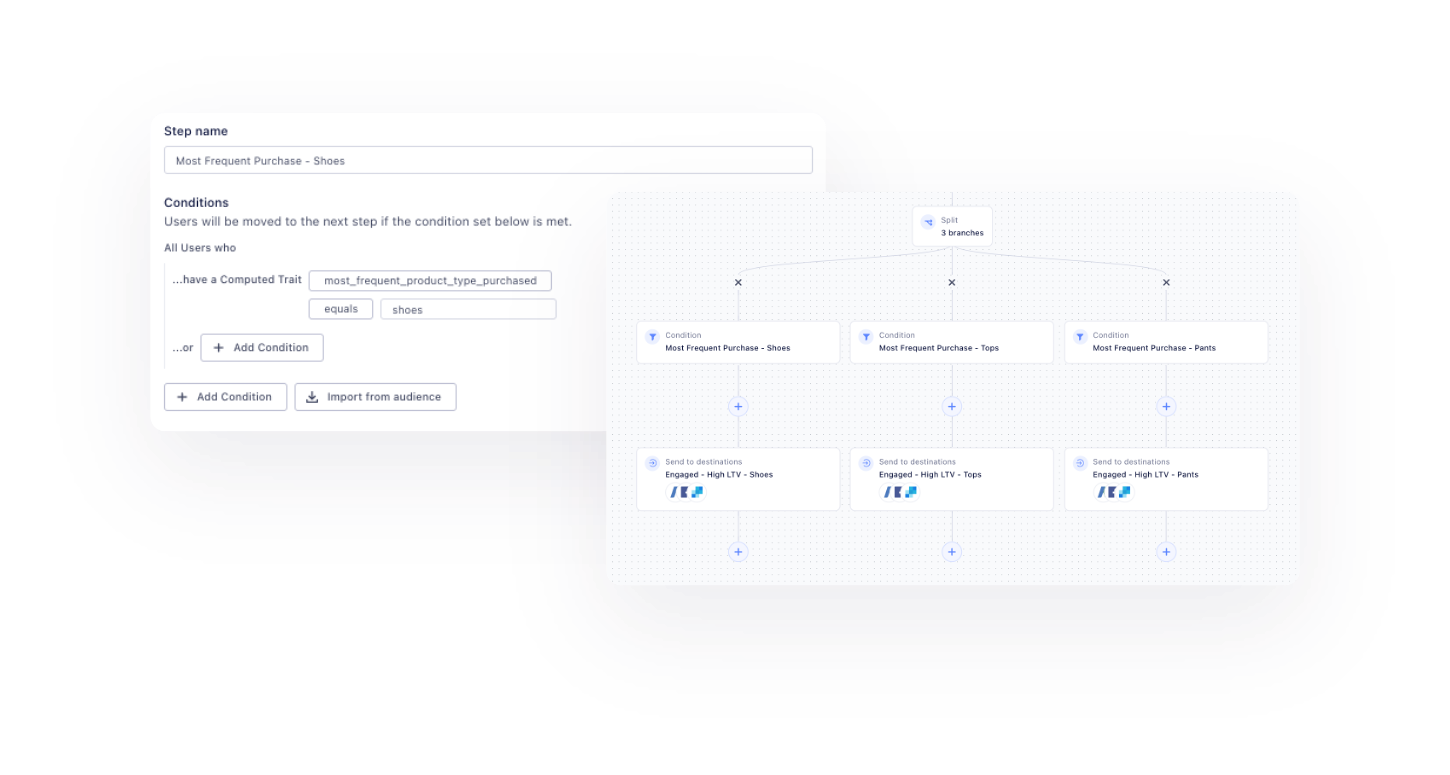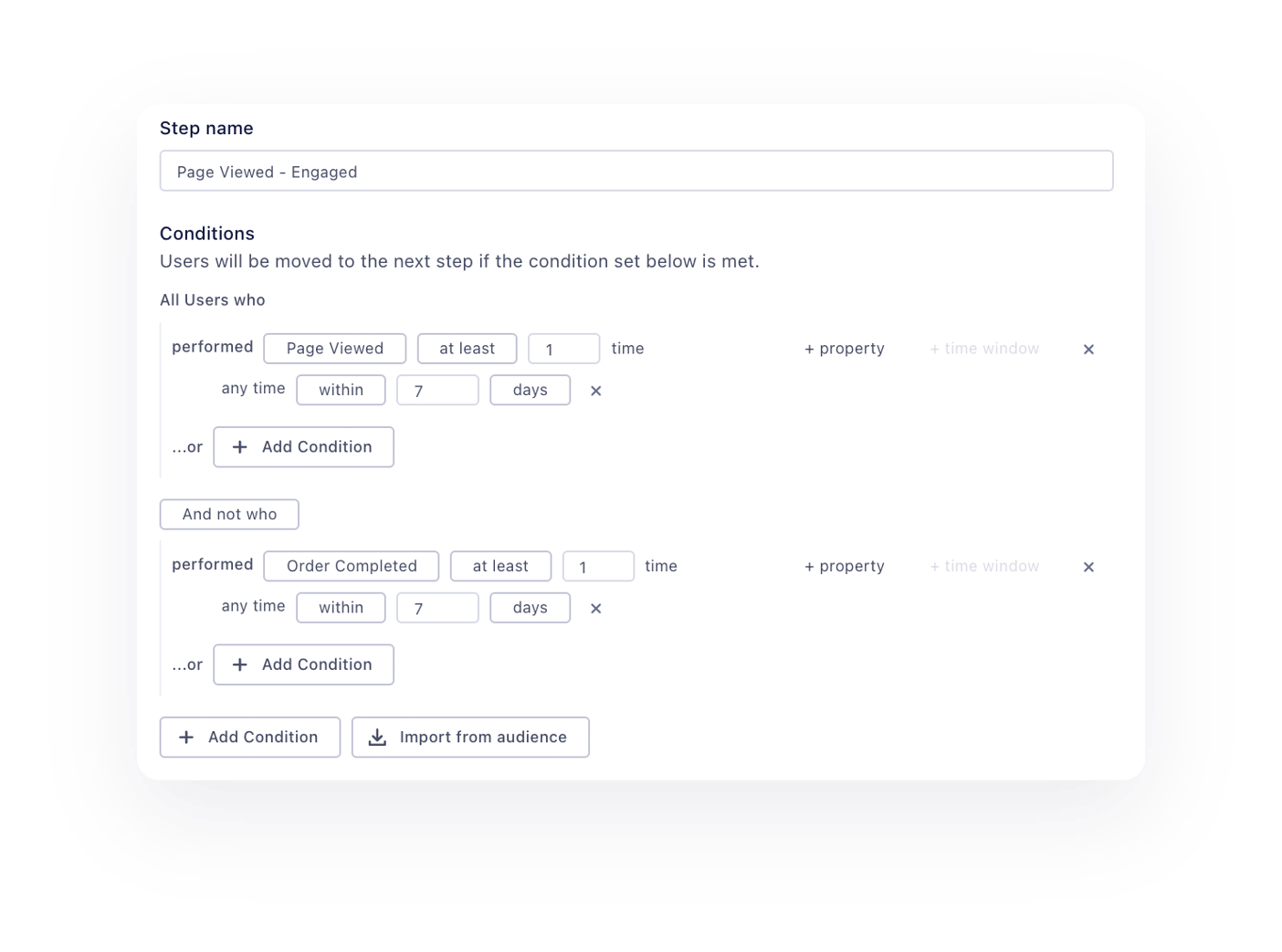4 Steps to Increase Email Marketing Conversions
Here we’ll give you the tools you need to increase your email marketing conversions.
Here we’ll give you the tools you need to increase your email marketing conversions.
An email marketing conversion is when a customer or prospect takes a desired action as a result of an email you sent. This is usually in the form of clicking a CTA (call to action), which could be to sign up for a demo, use a discount code, download an ebook, visit a landing page – whatever the goal of your email campaign may be.
Tracking email conversions is a way to measure your campaigns’ effectiveness and return on investment (ROI). Email marketing tools typically have analytics capabilities that can track conversion rates, among other important metrics (e.g., deliverability, open rates, unsubscribes).
To calculate your email conversion rate, divide the number of people who took a desired conversion action (as a result of your email) by the total number of recipients.

Say you successfully delivered 5,000 emails, and 700 recipients clicked on a CTA to download an ebook (the desired action). Divide 700 by 5,000 and multiply the result (0.14) by 100 to express it as a percentage. Now you know that 14% of all people who got your email did what you hoped they would. By most benchmarks, that’s a good conversion rate.
How does your email conversion rate compare to your baseline performance and the industry average? If you fall short of those benchmarks, you can help improve your email marketing performance by doing the following.
Audience segmentation lets you send relevant emails based on customers’ interests, demographic profiles, buying habits, and current stage in the customer journey – so customers are more likely to convert. For example, you can send an email to Boston residents about local shopping events, or offer early access to a new product to your current high-value customers.
You can use a customer data platform (CDP) to create nuanced segments, like this:

The example above shows an audience segment created using Twilio Engage, a customer engagement solution built on top of Segment’s CDP. Here, we filter a company’s customer base to find people who viewed a product page within the last seven days but did not make any purchases. From there, a marketer can launch a re-engagement campaign to convince these interested users to convert.
Personalization is what will make your email stand out in people’s inboxes – more than half (57%) of customers say personalization influences how memorable an email is. Personalization also lifts revenue, with over three-fourths of consumers saying they’re more likely to buy from, return to, and recommend businesses that prioritize relevance in the customer experience.
Let’s return to the re-engagement example above. In that scenario, a marketing team would be sending an email to customers based on the items or offers they’ve already viewed (and we can infer, are interested in). But going through your customer data to manually identify who viewed what, and when, would take hours. By leveraging marketing automation, you can set up rules and conditions to automatically trigger personalized emails based on customer behavior.

Learn more about the step-by-step processes and tools for automating email personalization with two Segment recipes:
A/B testing your emails is a great way to understand which elements are influencing customer behavior (either positively or negatively). For instance, you can A/B test how subject lines impact open rates, or the effectiveness of your copy or CTA placement. You can also A/B test the time of day you send the email to see when you get the most engagement.
To get started with A/B testing, it’s important to first understand your baseline performance. Knowing your strengths and weaknesses when it comes to email campaigns is a great way to pinpoint what should be tested first.
Learn more about implementing A/B testing (and how to analyze results) here.
44% of emails are read on mobile devices, meaning mobile optimization is a non-negotiable step for creating high-converting emails. When you write and design your email, check the mobile preview to see how your message will look on a smartphone and tablet. (Most email marketing tools support templates that adapt to mobile and desktop devices.)
Follow these general guidelines to keep emails mobile-friendly:
Limit email subject lines to 40 characters so they won’t be cut off.
Frontload pre-header text – place the most intriguing info or enticing offers upfront before the text gets cut off.
Make CTAs at least 40x40 pixels to make them more clickable by fingertips.
Use a single-column layout to fit the constraints of a narrow screen.
Avoid large files that take lots of time and data to load.
Use white space, images, or pull quotes to create breathing room between blocks of text.
A landing page lets customers continue the journey that began when they read your email and clicked its CTA. You only have precious few seconds to keep the customer interested and show them how you’ll deliver on what was promised. That’s why a high-converting landing page is crucial to email campaigns.
You’ll notice that the landing page has one goal: to drive conversions for a particular campaign. An effective landing page generally doesn’t go, “And while you’re here, you might also be interested in…” Many marketers even avoid having navigation menus on landing pages to dissuade the customer from wandering elsewhere on the site before converting.
Landing pages become even more persuasive when you optimize them through A/B testing and personalization. In a campaign to advertise cleaning services across hundreds of locations, Merkle, a marketing agency, A/B tested a dynamic landing page against a static one. Landing page conversion was higher by 9.2% on desktop and 25.2% on mobile for the landing page version that personalized the copy based on the customer’s location.
Connect with a Segment expert who can share more about what Segment can do for you.
We'll get back to you shortly. For now, you can create your workspace by clicking below.
A study of 2,000 emails suggests that every dollar spent on email marketing yields $36 in return. That figure soars to $42 for emails that use dynamic content.
A study of e-commerce emails shows that the average conversion rate in 2022 was 8.17% (they defined a conversion as a completed purchase). Since conversion can mean many different things depending on your business goals, you can look at average click-through rates (CTR) as a proxy for conversion rate benchmarks. Average click-through rate differs by industry, ranging from 0.65% for transportation services to 2.30% for tech services, based on data from Constant Contact.
Email marketing isn’t necessarily more effective than social media. Still, it does offer a significant advantage: email is an owned channel, which means you can control how you communicate with your audience and gather data on customer behavior directly without relying on a third-party platform. You can segment email audiences using reliable, first-party data. Email marketing also costs less than social media advertising and thus yields higher ROI.
Twilio Engage lets you hyper-personalize emails at scale. You can create nuanced audience segments based on customers’ traits and real-time actions. You can also automate email marketing workflows that get triggered whenever a customer meets specific criteria.